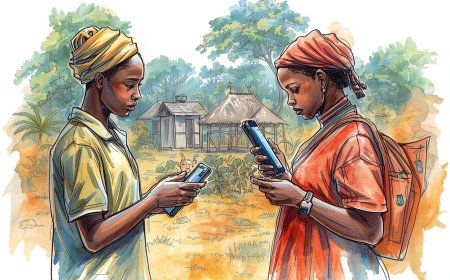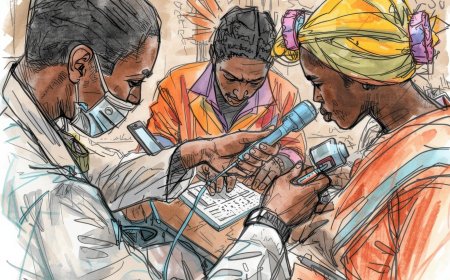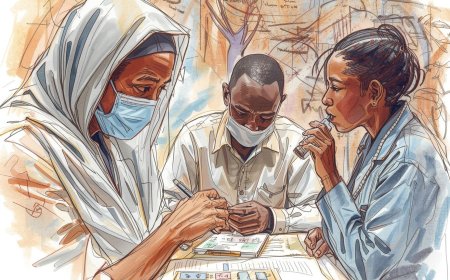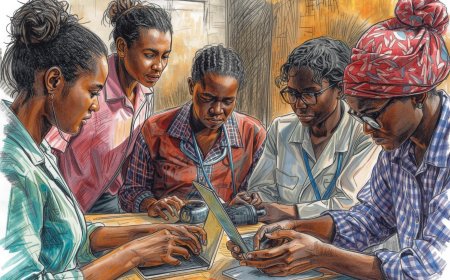How Social Entrepreneurs in Africa CAN Build Inclusive Health Systems
Practical playbook for African social entrepreneurs to design, finance and scale inclusive health systems through co-design, integration, accessible tech and sustainable funding.

Social entrepreneurs in Africa don’t need permission to change health systems — they need a playbook that puts inclusion at the center. Too often “innovation” is translated as a shiny new app or a vertical pilot that leaves the poorest and most marginalised behind. Inclusive health systems mean that services are reachable, affordable, appropriate and dignified for everyone: women, children, people with disabilities, migrants, the rural poor and workers in informal settlements. Social entrepreneurs can — and must — design for that reality from the start.
Below are six practical levers that make inclusion not an afterthought but the core unit of scale.
1. Start by designing with the people you want to reach
Co-design is non-negotiable. Run short, repeated workshops with community health workers, patients, caregivers and local leaders. Test prototypes in real settings — markets, churches, community centers, and homes — not just in boardrooms. When services reflect users’ realities (language, gender dynamics, mobility constraints), uptake and retention follow.
2. Build bridges to public systems, don’t build separate islands
Health ministries still hold the pathways to scale: data registries, supply chains, policy levers and financing. Early, pragmatic integration — referral pathways, shared reporting formats, and MOUs with clinics — converts pilots into sustained services. Treat public systems as partners: align with national strategies, share data responsibly, and design for interoperability.
3. Design modular, layered solutions that degrade gracefully
The most inclusive solutions work across low-tech and high-tech environments. Think modular: a paper-based or SMS workflow that can be upgraded to a smartphone app and then to an API-connected digital health record. This protects service continuity for people with low literacy, limited connectivity, or older devices.
4. Make accessibility and equity concrete design criteria
Inclusion must be measurable. Set targets for service reach among women, people with disabilities, rural households and youth. Build low-bandwidth, text-to-speech and multilingual options. Hire people with lived experience into design and governance roles. Small changes — ramps, audio prompts, female community facilitators — unlock big differences in who can use a service.
5. Align financing to sustainability and inclusion
Short grants drive pilots, not systems. Social entrepreneurs should layer funding: catalytic grants for design and validation, outcome-based contracts (e.g., pay-for-performance) with governments or insurers for service delivery, and social revenue models (sliding fees, private partnerships) to sustain operations. Advocate for pooled funding or development-impact vehicles that reward equity indicators and long-term reach, not only novelty.
6. Measure system-level impact, not vanity metrics
Downloads, likes and pilots are easy to count. Measure what matters: referral completion rates, reductions in out-of-pocket costs, time to treatment, service continuity across levels of care, and equity in coverage. Use simple, validated indicators and publish results so peers can learn and replicate.
Why this is uniquely African — and globally relevant
African social entrepreneurs operate where constraint has bred ingenuity: community networks, mobile money, and resilient informal systems. Those strengths are assets for building inclusive health systems. When an entrepreneur in a peri-urban settlement designs a workstream that reaches women selling goods at dawn markets, that design often generalizes to other hard-to-reach populations elsewhere. The continent’s lessons about low-cost, high-impact design are globally relevant — but only if we prioritize reuse, openness and system integration.
A short checklist for teams launching inclusive health initiatives
-
Run at least three community co-design sessions before any tech build.
-
Secure one formal partnership with a public health entity (clinic, district health office) during validation.
-
Build a low-tech fallback (paper/SMS) that replicates core functions.
-
Set equity targets (gender, disability, geography) and make them reporting requirements.
-
Include a path to blended finance or outcome contracting in your sustainability plan.
A final note to funders and policymakers
If you want inclusive systems, change the incentives. Funders: require co-design and equity targets and fund longer validation windows. Policymakers: prioritize interoperability standards, pooled procurement and paths to public contracting for proven social enterprises. Together, these policy and financing tweaks turn pilots into services that keep working when the grant ends.
Social entrepreneurs in Africa are already inventing around scarcity — turning constraints into creative advantage. The next step is to channel that creativity toward systems, not silos. Build with communities, partner with public systems, design for the lowest common denominator and measure what truly matters: equitable, continuous access to care. Do that, and we won’t just see more innovations — we’ll see health systems that finally include everyone.
What's Your Reaction?
 Like
0
Like
0
 Dislike
0
Dislike
0
 Love
0
Love
0
 Funny
0
Funny
0
 Angry
0
Angry
0
 Sad
0
Sad
0
 Wow
0
Wow
0





































